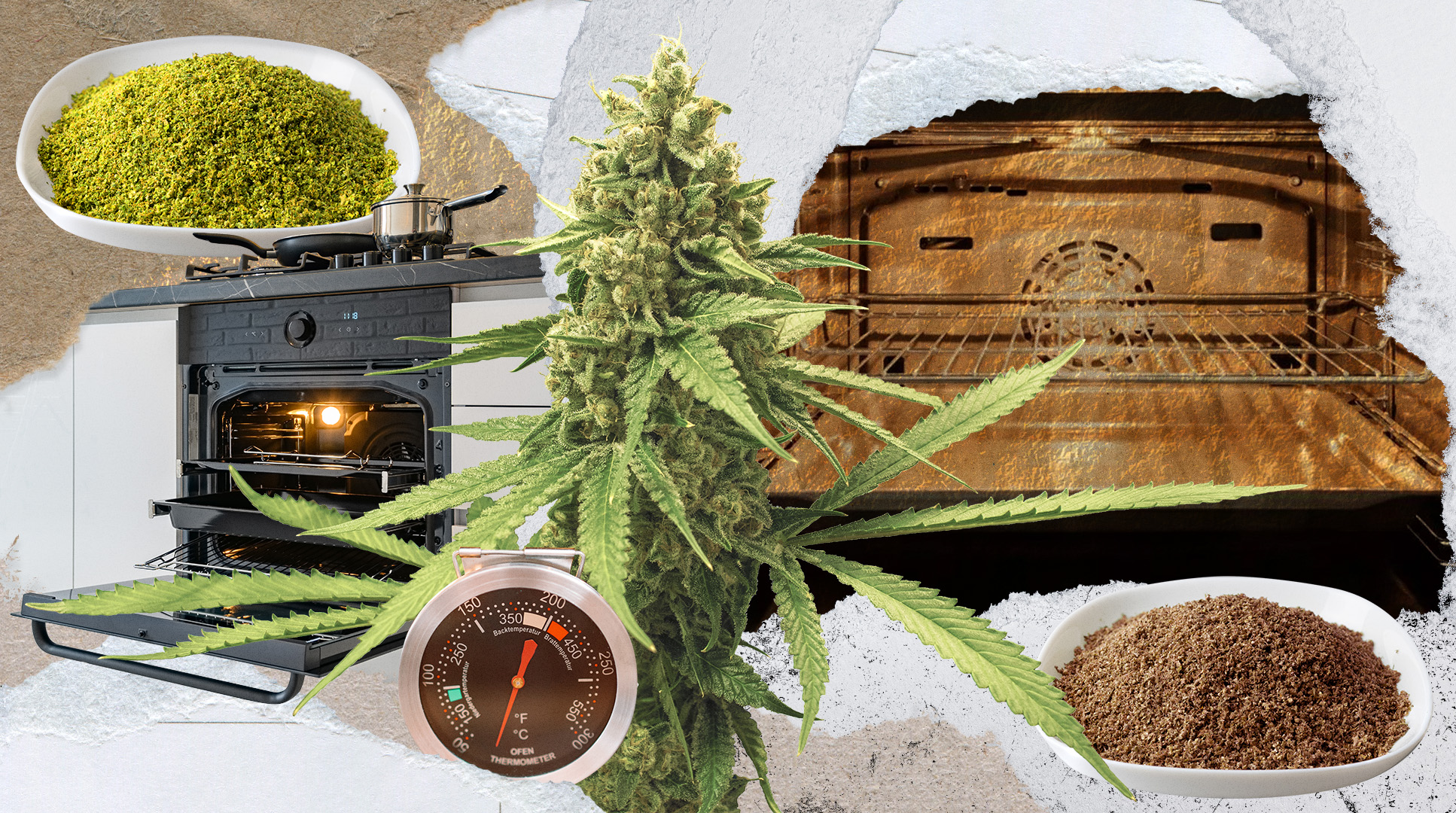Experts are taking a bird’s eye view of an exciting and rapidly evolving area in cannabis research known as the endocannabinoidome (eCBome). Simply put, the endocannabinoidome is like the expansion pack of the endocannabinoid system (ECS) (1).
The eCBome may hold the keys to regulating and balancing complex bodily processes and diseases. This includes the ECS, the microbiota-gut-brain axis, obesity, diabetes, metabolic syndrome, energy intake and storage, inflammation and oxidative stress, glucose and fat metabolism, and pancreatic and liver health (2,3,4).
While these are common health problems that modern medicine still hasn’t solved, the eCBome is a common thread among them. Understanding the bigger picture is the next step toward treating them.
- What Is the Endocannabinoidome (eCBome)?
- The Difference Between the ECS and eCBome
- Regulating and Balancing Key Bodily Functions
- How Does the Endocannabinoidome Work?
- Endocannabinoids vs. Endocannabinoid-like Molecules
- Cannabinoid Receptors
- Non-cannabinoid Receptors
- Unique eCBome Messengers
- How Do We Influence the Endocannabinoidome?
- How May the Endocannabinoidome Be Used Therapeutically?
- Final Takeaway
What Is the Endocannabinoidome (eCBome)?
At its core, the eCBome is an intricate signaling system. The eCBome includes the ECS plus all other components that are also influenced by cannabinoids, endocannabinoids, and endocannabinoid-like molecules. Outside of the ECS, the eCBome influences include a broad network of receptors, enzymes, immune and bacterial cells, minerals, neurotransmitters, and even hormones (5).
Soon after the discovery of the ECS in the ’90s, researchers found that endocannabinoids and similar compounds act not only on cannabinoid (CB1 and CB2) receptors but also on many other receptor families. The subsequent discoveries on endocannabinoids and non-CB receptors led to the idea of an expanded endocannabinoid system, coined the “endocannabinoidome” in 2013 by Dr. Vincenzo Di Marzo (6).
Cannabinoids and chemically similar compounds are multi-target molecules that influence many processes at the same time, opening many new and exciting therapeutic avenues. There is a lot left to discover and learn about how all the moving pieces fit together and balance each other out in wellness and disease.
The Difference Between the Endocannabinoid System (ECS) and Endocannabinoidome (eCBome)
Like the ECS, the eCBome is a complex signaling system that uses fatty-based molecules as messengers. However, there are a lot more components involved in the eCBome than the ECS.
There are only three categorical parts of the ECS, although they are enough to be present in virtually every organ system. The classic ECS components are the endocannabinoids anandamide and 2-AG, CB receptors (CB1 and CB2), and enzymes that make and break down endocannabinoids (NAPE-PLD, DGLα, DGLβ, FAAH, AND MAGL) (1,7,8). The eCBome starts with the ECS and continues its work elsewhere.
Beyond the ECS, the eCBome also includes over 100 fatty acid-derived signaling molecules and receptors, plus over 50 enzymes (9). Further key differences are that it includes our whole lipidome (fatty acid-based signaling network) and our microbiome (gut bacteria network) (5). These complex systems are communicating with each other as well as our brain, affecting our inner balance of bacteria, inflammation, gut, and mental health. This is the idea behind the microbiome-gut-brain axis and why the eCBome holds missing pieces of the puzzle (3).
For a deep dive into the endocannabinoid system itself, check out this article: Cannabinoids and the Endocannabinoid System: A Match Made in Heaven
Regulating and Balancing Key Bodily Functions
The wider reach of the eCBome means it is involved in regulating pain, inflammation, mood, appetite, gut permeability, and energy balance (4,5,6). These are very similar functions to the endocannabinoid system but are now seen in an even more complex way with myriad actors on the cast that don’t always get along.
How Does the Endocannabinoidome Work?
The eCBome explains the expansive therapeutic benefits that cannabinoids may provide that aren’t explained by simply activating CB1 and CB2. All of our lipid signaling networks, including endocannabinoids and endocannabinoid-like compounds, are linked together through the eCBome because they share so many common pathways. These pathways are two-way streets of communication and have multiple intersections, causing the complexity.
Endocannabinoids vs. Endocannabinoid-like Molecules
The endocannabinoids anandamide and 2-AG are made on demand when needed. They are an important part of our homeostasis, or internal balance, in response to signals like pain, inflammation, behavior, appetite, and much more (1).
Endocannabinoids are known for being lipid (fat-based) messengers between and within cells. They have a special ability to travel against the flow of the original signals (retrograde transmission) to give cells feedback.
Why You Should Get Your Medical Marijuana Card
Veriheal has satisfied millions of patients nationwide by giving them access to these benefits
- Larger purchase limits
- Peace of mind
- Enhanced legal protection
- Access to higher potency strains
- Save up to 25% on cannabis purchases
- Skip the line at the dispensary
In addition to anandamide and 2-AG, the eCBome includes over a hundred other chemically similar compounds called “endocannabinoid-like” molecules. They are also fat-based signaling molecules often mixed with amino acids (e.g., NAAAs, PEA, OEA) (10). These endocannabinoid-like molecules can come from our own cells as well as from gut bacteria, explaining how they communicate with us and change our body and mind.
Cannabinoid Receptors
Cannabinoid receptors CB1 and CB2 were actually first discovered using THC, not endocannabinoids. This sparked the interest in finding the endocannabinoids, which at first they thought only bound to CB1 and CB2 receptors.
However, researchers quickly discovered this was not true. Some researchers today, including Dr. Di Marzo, think that CB1 and CB2 receptors should instead be called “THC receptors” because there are so many more receptors that interact with other cannabinoids and endocannabinoids (9).
Non-cannabinoid Receptors
Endocannabinoids are known to also interact with receptors like TRPV1, PPARG, and GPR55 [10]. Other known eCBome receptors include PPARα, GPR18, GPR119, Cav3, TRPV2, and TRPV4. The variety of receptors outside of CB1 and CB2 explains the vast potential of the eCBome.
Unique eCBome Messengers
Outside of fat-based molecules, the eCBome also employs over 20 neurotransmitters, hormones, proteins, and minerals. Below is a table from the CannaKeys 360 research group summarizing each of these specialty signals and their associated implications (5).
| Neurotransmitters, Hormones, and
other Communication Signals |
Mental-Emotional
Association |
Reference |
| Acetylcholine |
e.g., memory, wakefulness |
E. Murillo-Rodríguez et al., 2018 |
| Cortisol |
e.g., stress response |
Kathmann et al., 2006 |
| Cytokines |
anti-inflammatory |
L. Jean-Gilles et al., 2010 |
| Cytokines |
pro-inflammatory |
F. Zádor et al., 2021 |
| Dopamine |
e.g., motivation, reward |
A. Terzian et al., 2011 |
| Endogenous opioids |
e.g., analgesia |
M. Kathmann et al., 2006 |
| Epinephrine |
e.g., fight, flight, or freeze |
N. Niederhoffer et al., 2001 |
| Gamma-aminobutyric acid (GABA) |
e.g., calming |
S. Lee et al., 2010 |
| Ghrelin |
e.g., hunger |
L. Senin et al., 2013 |
| Glucagon |
e.g., hungry, angry |
K. Patel et al., 2014 |
| Glutamate |
e.g., excitement, excitotoxicity |
A. Köfalvi et al., 2020 |
| Insulin |
e.g., energy, hungry |
A. Laguerre et al., 2021 |
| Leptin |
e.g., satiated |
B. Bosier et al., 2013 |
| Norepinephrine |
e.g., stress, attention |
R. Wyrofsky et al., 2019 |
| Oxytocin |
e.g., trust, intimacy, bonding |
D. Wei et al., 2015 |
| Serotonin |
e.g., happiness, well-being |
I. Ibarra-Lecue et al., 2021 |
| Testosterone |
e.g., confidence, aggression |
J. Lim et al., 2023 |
| Vasopressin |
e.g., social recognition, aggressions |
V. Luce et al., 2014 |
| eCBome-Related Mineral Responsive to Modulating Components of the ECS |
Mental-Emotional Association |
Reference |
| Calcium (Ca2+) |
e.g., schizophrenia, ASD, bipolar |
T. Boszek et al., 2021 |
| Sodium (Na+) |
e.g., ASD |
C. Milligan et al., 2022 |
| Potassium (K) |
e.g., schizophrenia, ASD, bipolar |
Yu-Fung Lin 2021 |
Blesching, U. (n.d.). Endocannabinoidome (eCBome). Cannakeys. https://cannakeys.com/endocannabinoidome-ecbome/
How Do We Influence the Endocannabinoidome?
The eCBome, like the ECS, is influenced by a variety of genetic and environmental factors. Our genes are the underlying fabric of our eCBome network; alterations here propagate serious downstream effects. Environmental things like diet, exercise, mindfulness, and lifestyle choices can promote certain gut bacteria and eCBome molecules over others (9).
For instance, the ratio of omega-6 to omega-3 in our food proportionately changes our endocannabinoid tone because they are the building blocks of endocannabinoids (13). If there is too much omega-6 and not enough omega-3, typical for Western diets, then there may be too little endocannabinoids produced, leading to chronic conditions (14). The ideal dietary ratio of omega-6 to omega-3 should be around 5:1, but our modern diets are estimated to be around 20:1.
Negative factors like high-calorie, Western diets, lack or presence of nutritional factors, lack of physical activity, and uncontrolled recreational drug or even cannabis use can modify our eCBome balance and push us over the edge into chronic disease (9).
How May the Endocannabinoidome Be Used Therapeutically?
An imbalance of the eCBome is now being linked to disorders like idiopathic inflammation, metabolic disease, chronic enteropathies (gut problems), and neuroinflammatory diseases (11).
The current eCBome research focus is on understanding its relationships with the microbiome (gut bacteria), metabolism, and inflammation around the brain, gut, liver, and pancreas (4). Particularly in regard to pancreatic cancer, obesity, diabetes, depression, neuropathic pain, and chronic liver disease (4,10,11,12). These connections are just starting to appear, so there isn’t any conclusive clinical research regarding the eCBome yet.
Mapping and testing the complex relationships of the eCBome can help us make targeted or custom cannabinoid therapies for such diseases one day. It can also help guide patients to improve their eCBome through mind-body medicine, food and nutrition, the microbiome, lipidome, and the constituents of cannabis (5).
Final Takeaway
The eCBome is showing us that there is even more that can be done beyond CB1 and CB2 receptors. Understanding its complexities will take a lot more time and considerable research effort. Crossing this next frontier in cannabis medicine is inevitable but offers a high payout in the long run.
1. Benavides, A. (2022). Cannabinoids and the Endocannabinoid System: A Match Made in Heaven. Veriheal. https://www.veriheal.com/blog/cannabinoids-and-the-endocannabinoid-system-a-match-made-in-heaven/
2. Veilleux, A., Di Marzo, V., & Silvestri, C. (2019). The Expanded Endocannabinoid System/Endocannabinoidome as a Potential Target for Treating Diabetes Mellitus. Current Diabetes Reports, 19(11), 117. https://doi.org/10.1007/s11892-019-1248-9
3. Forte, N., Fernández-Rilo, A. C., Palomba, L., Di Marzo, V., & Cristino, L. (2020). Obesity Affects the Microbiota–Gut–Brain Axis and the Regulation Thereof by Endocannabinoids and Related Mediators. International Journal of Molecular Sciences, 21(5), Article 5. https://doi.org/10.3390/ijms21051554
4. Barré, T., Di Marzo, V., Marcellin, F., Burra, P., & Carrieri, P. (2023). Expanding Research on Cannabis-Based Medicines for Liver Steatosis: A Low-Risk High-Reward Way Out of the Present Deadlock? Cannabis and Cannabinoid Research, 8(1), 5–11. https://doi.org/10.1089/can.2022.0014
5. Blesching, U. Endocannabinoidome (eCBome). (n.d.). Cannakeys. Retrieved April 27, 2023, from https://cannakeys.com/endocannabinoidome-ecbome/
6. Maione, S., Costa, B., & Di Marzo, V. (2013). Endocannabinoids: A unique opportunity to develop multitarget analgesics. Pain, 154 Suppl 1, S87–S93. https://doi.org/10.1016/j.pain.2013.03.023
7. Benavides, A. All About Anandamide: Taking Cannabinoid Treatment to New Heights. (2021, October 25). Veirheal Cannabis Central. https://www.veriheal.com/blog/what-is-anandamide/
8. Di Marzo, V. (2018). New approaches and challenges to targeting the endocannabinoid system. Nature Reviews Drug Discovery, 17(9), 623–639. https://doi.org/10.1038/nrd.2018.115
9. Di Marzo, V., & Silvestri, C. (2019). Lifestyle and Metabolic Syndrome: Contribution of the Endocannabinoidome. Nutrients, 11(8), Article 8. https://doi.org/10.3390/nu11081956
10. Forteza, F., Giorgini, G., & Raymond, F. (2021). Neurobiological Processes Induced by Aerobic Exercise through the Endocannabinoidome. Cells, 10(4), Article 4. https://doi.org/10.3390/cells10040938
11. Schiano Moriello, A., Di Marzo, V., & Petrosino, S. (2022). Mutual Links between the Endocannabinoidome and the Gut Microbiome, with Special Reference to Companion Animals: A Nutritional Viewpoint. Animals, 12(3), Article 3. https://doi.org/10.3390/ani12030348
12. Falasca, V., & Falasca, M. (2022). Targeting the Endocannabinoidome in Pancreatic Cancer. Biomolecules, 12(2), Article 2. https://doi.org/10.3390/biom12020320
13. Omega-3 Cannabinoid Research. (n.d.). Cannakeys. Retrieved April 28, 2023, from https://cannakeys.com/omega-3-cannabinoid-research/
14. Bosch-Bouju, C., Layé, S., Bosch-Bouju, C., & Layé, S. (2016). Dietary Omega-6/Omega-3 and Endocannabinoids: Implications for Brain Health and Diseases. In Cannabinoids in Health and Disease. IntechOpen. https://doi.org/10.5772/62498
Author, Share & Comments
















